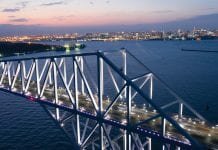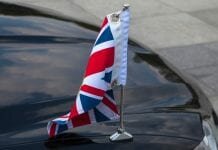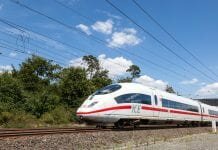
Government Europa explores how energy auditing of the vessels of the future is helping to optimise ship operation and reduce emissions, minimising the environmental impact of shipping.
With fuel and renewable sources of energy powering ships across the world’s oceans, the cost of these are a major component in the cost of ship operations. Therefore, energy auditing is used to optimise energy efficiency on board through identifying key areas where energy can be conserved. As an increasing number of ships transitions towards renewable energy sources, an energy audit can help to identify how favourable these sources are in comparison to more traditional power solutions. Government Europa explores how energy auditing of the vessels of the future is helping to optimise ship operation and reduce emissions to minimise the environmental impact of shipping.
How can energy efficiency on-board be improved?
An industry effort to decarbonise both the ocean and air has led to the development of the Energy Efficiency Design Index (EEDI), a compulsory specification document for all new vessels which seeks to cut the environmental impact of shipping. As a result, the development of new technologies and energy efficient design features must facilitate adherence to EEDI standards. A green ship is the ultimate ideal in decarbonisation, and it is thought that innovative ship design and operational measures, alongside a reduction in fuel consumption and emissions, are integral in achieving this ideal.
As such, a working group established by the International Maritime Organization, has made suggestions in reference to endorsement of the EEDI on all new ships about 400 GT.
Although, some exceptions will stand, including roll on/roll off vessels and those with electric, turbine or hybrid propulsion systems; of which will be targeted by the EEDI once an appropriate reference for ships with such propulsion systems has been outlined in the index.
Meanwhile, alternative renewable solutions to fuel have been found in liquefied petroleum gas, solar and wind power. However, it is not only the fuel source which is being re-thought, passage planning and continual review of routes are integral in enhancing the energy efficiency of ships.
What is an energy audit?
The aim of energy auditing is to help understand in detail the ways in which energy and fuel are used within industry, assisting in identifying areas where waste can be limited. The benefits are wide ranging – reduction in energy costs, environmental impact and bolstering accessibility to energy supplies. An energy audit consists of the following processes:
- Identification of areas where there is a loss of energy, loss of efficiency and the cost savings of correcting these losses;
- Identification of areas whereby newly developed technologies could assist in delivering financial savings; and
- Improvement of ship efficiency, fuel savings and to reduction of emissions through emission control.
Investigating the energy being used on board each day – whilst at sea and in the port – an energy audit identifies which processes use the most energy and how reductions can be delivered, contributing towards a reduction in the environmental impact of shipping.
What processes are involved in energy audits on board vessels?
Data collection
All relevant data for the machinery and equipment on board is collected in a range of forms. This could include running hourly data or event logs. In instances where this information is not available nor accessible, duty engineers and operators are interviewed.
Condition evaluation
Once the condition of machinery on the ships has been evaluated, it is identified whether overhaul or a change of components is required in order to elevate ship performance.
Economical alternatives and audit report
An audit will also assist in the identification of the economic alternatives which are available, whilst also aiding the decision-making process. From the following stages, an audit report is created which details the findings of the audit.
How will the Vessels for the Future adopt energy management processes?
Future vessels will need to improve energy management through adopting new and sustainable energy sources, whilst delivering cost savings, emission reduction and the implementation of new energy technology. One initiative exploring the optimisation of energy on board is the Vessels for the Future initiative, launched by the European Research Association to reduce the environmental impact of shipping by exploring the green future of ships.
The project illustrates the importance of using modern technologies to reduce energy demand, but also through the application of tools for both monitoring and automation purposes. Moreover, Vessels for the Future also outlines the potential of remote control operation, improving and optimising operations which will reduce overall energy consumption.
Holistic modelling is a requirement in providing the tools for energy consumption, optimisation and reduction. As a result, initiatives such as Vessels for the Future envision that technology companies will collaborate on future projects in the maritime technology sector, especially those with specialisms in energy storage, distribution hardware, computer-based modelling and high-tech electronic products.
Decarbonisation of the shipping sector
In a report published by the International Transport Forum (ITF), it was found that to minimise the environmental impact of shipping, the global shipping industry could be decarbonised by up to 95% by 2035, through extensive and widespread deployment of existing technologies. As a result, the shipping industry is looking at the ways in which it can retrofit existing ships with technology which will significantly reduce fuel use and, with thus, emissions. The ITF report four key methods of depollution through retrofitting, including:
- Fitting the bows of vessels with an extension below the water level, reducing drag and decreasing emissions by 2-7%
- Air lubrication, whereby compressed air is pumped below the hull, creating a carpet of bubbles. Moreover, it also reduces drag and can reduce emissions by a further 3%
- Replacement of one propeller with two; rotation of these in opposite directions allows recovery of slipstream energy and can increase efficiency by 8-15% and
- The cleaning of the hull and re-paint with low-friction coating, of which can deliver increased efficiency of up to 5%.
Meanwhile, the Sustainable Shipping Initiative argues that some of the largest gains in decarbonisation will come once petroleum-based fuel is prohibited.
An all-electric approach to vessels: from ferries to sightseeing
In August it was announced that the Future of the Fjords vessel was the first carbon-fibre ship to be fully electric, offering first-of-its-kind emission-free transport throughout the western Norwegian region. As reported in Passenger Ship Technology, Rolf Sandvik, Fjords chief executive, said: “The weight of the hotel load is extremely important because this takes energy from the batteries too. Therefore, we were looking to shave off as many tonnes as possible.” The vessel was constructed not only under the premise of it being as light as possible but sturdy, in order to ensure its longevity with a view to decreasing the environmental impact of shipping.
Brødrene Aa, which specialises in fast ferry vessels, applied their knowledge in order to enhance the interior of the Future of the Fjords vessel. Torstein Aa, shipyard designer, said: “We have specialised in fast ferries … and it is all about weight and efficiency. Therefore, we have a really good process when making energy efficient ships.”
Inside the vessel, the lightweight seats are constructed from an aluminium frame and are positioned as close to each other as possible, in order to reduce weight and save space respectively. Meanwhile, the majority of the internal walls are produced from aluminium hexagon panels. However, it is not only the interior construction elements which reduce the burden of weight on the vessel’s energy efficiency. The ferry’s charging solution, Power Dock, is a 40-metre-long and 5-metre-wide floating glass fibre dock which sits on the water and offers the capacity for storage, including freezers and cooling rooms. On-board, such storage will be used to store food for the canteen.
Fuel-cells and ferries
Water-Go-Round, the first commercial fuel-cell ferry, will use fuel cells in order to generate power, as provided by Hydrogenics of Ontario, Canada. Anticipated to launch in 2019, Golden Gate Zero Emission Marine’s 21 metre aluminium catamaran will offer a capacity of 84 passengers. The Water-Go-Round vessel will offer maximum speeds of 22 knots, powered by 360 kW of fuel cells and lithium-ion battery packs. On-board, the vessel will carry a 264kg tank array of 250-bar compressed hydrogen, providing up to two full days of operation. Moreover, the Water-Go-Round propulsion system will be formed from two 300 kW shaft motors, alongside 100 kWh batteries in the hulls of the vessel, of which will seek to boost power and achieve maximum speeds.
In the development process, a hydrogen battery hybrid system was opted for over pure electric power as it facilitates increased levels of flexibility, as well as ‘the best zero emissions technology for commercial maritime operators to maintain operational flexibility, commercial viability and regulatory compliance’, as reported on the Water-Go-Round website.
Decarbonisation of the cargo vessel
The Aquarius Ecoship, a Japanese cargo ship developed by Eco Marine Power, is fuelled by a series of fixed sails and solar panels. However, it is thought that this same system could also function to fuel power oil tankers, cruise ships and other transportation means. Although it would not entirely eliminate the demand for fuel, emissions could be cut by 40% through the use of large batteries which store solar and wind energy.
Meanwhile, Japanese shipping line NYK state that its 350-metre-long container ship design, the Super Eco Ship 2030, would use liquified natural gases to enable hydrogen to run on fuel cells. Supported by solar panels which cover the entire vessel, as well as 4,000 M2 of sails to capture wind energy, emissions could be cut by up to 70%, significantly reducing the environmental impact of shipping.


















